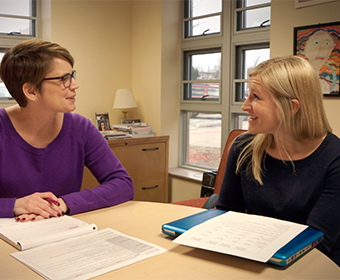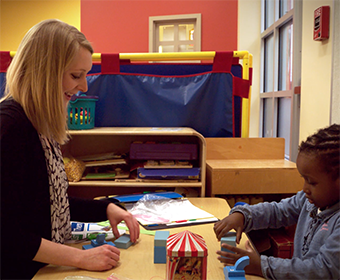The classroom environment is purposefully planned to support student IEP learning goals through large group, purposeful learning centers, space for individualized instructional learning activities, as well as areas for peer-to-peer interaction. In this video, Kelly Crenshaw will introduce you to the “why, what, and how” she organizes her classroom for young children with autism spectrum disorder and how she designs it to be student-centered to maximize student emotional safety and purposeful play. The classroom’s centers facilitate the learning application through adult-supported/individual learning as well as peer-to-peer investigation, exploration, and seizes on opportunities to enhance the “fun” of learning. Pay special attention to how the classroom’s environment and learning activities are organized to support functional language, independence for completing routines and structures, and “how to do school” (2e-Organizing Physical Environment: There is total alignment between the learning activities and the physical environment; Distinguished).
Resources
- The Framework for Teaching Evaluation Instrument, 2013 Edition
- The Framework for Teaching: Six Clusters Supporting High Level Learning, 2017 Edition
- Framework Cluster 1: Clarity of Instructional Purpose and Accuracy of Content “Quick Notes” Observation Tool
- Framework Cluster 2: Safe, Respectful, Supportive, and Challenging Learning Environment & Cluster 3: Classroom Management “Quick Notes” Observation Tool
- Framework Cluster 4: Student Intellectual Engagement & Cluster 5: Successful Learning for ALL “Quick Notes” Observation Tool
- Framework Cluster 6: Professionalism “Quick Notes” Observation Tool
- Early Learning Planning Conversation Protocol
- Early Learning Reflection Conversation Protocol








